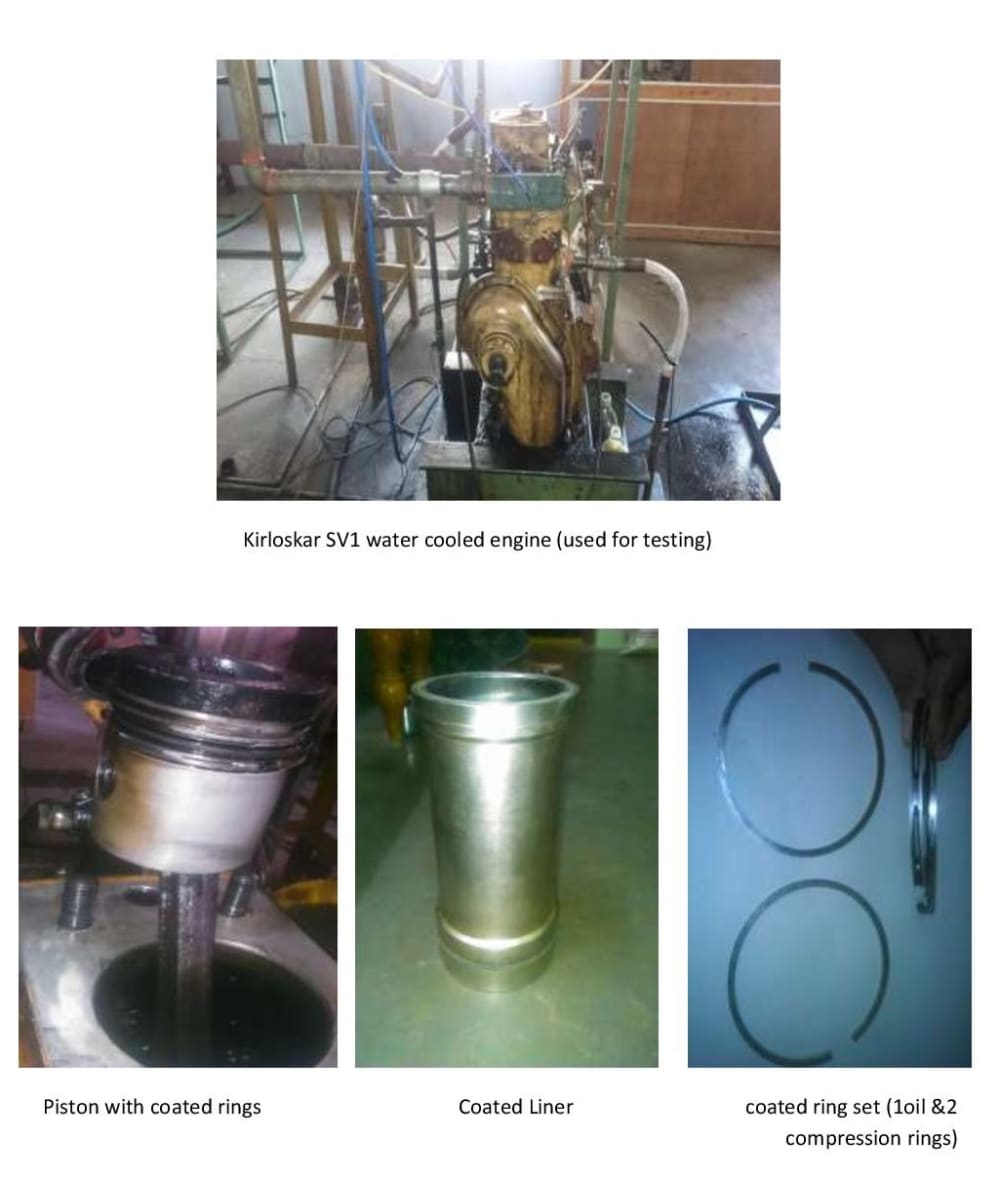Objective: Fossil fuel depletion and environmental degradation due to vehicular emissions is an alarming factor which necessitates alternative fuels and efficient engine operation. The main aim of this project is to reduce the emission, improve the performance, find the suitable alternates to fossil fuel for a CI engine.
In this project, an auto-catalytic Ni-P-W coating was carried out over the piston ring and liner which acts as a solid lubricant coatings and reduces the frictional loss during reciprocating action (main constituent of frictional loss). Two types of tri-fuel systems were used to substitute diesel, namely:
1. Acetylene(3lpm)+Turpentine(40%)+Diesel(60%)
2. Hydrogen(18lpm)+Turpentine(70%)+Diesel(30%)
Why LASER Surface texturing (LST)?
The LST is made on piston rings to act as hinge point for coating and honing-marks in liner act as micro asperities that enhanced the adhesion for coating. This further acts as a reservoir for lubricating oil.
Why Ni-P-W coating?
The auto-catalytic deposition of Ni-P-W is an alternate to hexavalent chrome-coating where the latter is carcinogenic. The present coating was found to be stable at a temperature range of 400oC-800oC (temperature around piston rings). Also,Ni-P-W coating used in this study possess good wear and corrosion resistances properties. It is relatively cheap to other coatings when subjected to mass production.
Why Acetylene and Hydrogen?
These two gases have high flammability limit and can be produced from natural products by pyrolysis and hydrolysis. These gases are clean combustion gases which don’t let any harmful by-products to environment.
Why Turpentine oil?
Turpentine oil is produced by steam distillation of resin obtained from trees, mainly pines. It releases lighter hydrocarbon fragments while injected. Since it is plant derivative product from trees, it encourages plantation of more Pine trees which also increases the oxygen levels and reduces CO2 in environment. Turpentine is low cost and also it does not require any chemical distillation process i.e transesterification like other biofuels.
Experimental setup
Kirloskar-SV1 water-cooled engine, eddy-current dynamometer, AVL smoke-meter and five-gas analyzer were used in this project. The liquid fuels were admixed and gaseous fuels were naturally aspirated in inlet-manifold.
Results
1. Diesel fuel alone with coated ring and liner:
The brake thermal efficiency (BTE) of the engine was improved by 10%, Fuel efficiency by 24% and also, reduced the emissions of NOx by 48%,CO by 70%,HC by 25%.
2. Acetylene(3lpm)+Turpentine (40%)+Diese l(60%) tri-fuels with coated ring and liner:
The BTE of the engine was improved by 13%, fuel efficiency by 32% and the reductions in the emissions of NOx by 40%, HC by 27% were achieved.
3. Hydrogen (18lpm)+Turpentine (70%)+Diesel (30%) tri-fuels with coated ring and liner:
The BTE of the engine was improved by 12%, fuel efficiency by 26% and the reductions in the emissions of NOx by 47%,CO by 78%,HC by 18% were obtained.
Conclusion:
1. The Ni-P-W coatings on piston ring and liner were found to improve the BTE, fuel efficiency and extensively reduce emission
2. By using these tri-fuel systems, the consumption and usages of diesel in CI engines were radically reduced.
3. The Turpentine oil is an eco-friendly chemical and its usages will encourage the plantation of Pine trees reduces CO2 levels in environment.
Video
Like this entry?
-
About the Entrant
- Name:Arun Kumaran
- Type of entry:teamTeam members:ARUN K ARAVINDH K SOMESHWAR M
- Patent status:none








